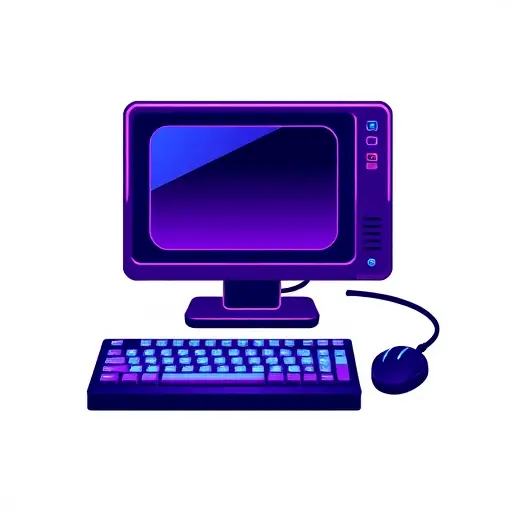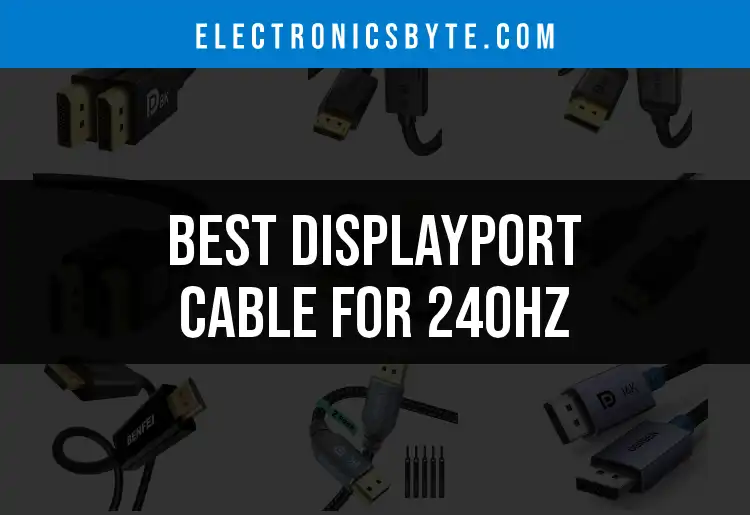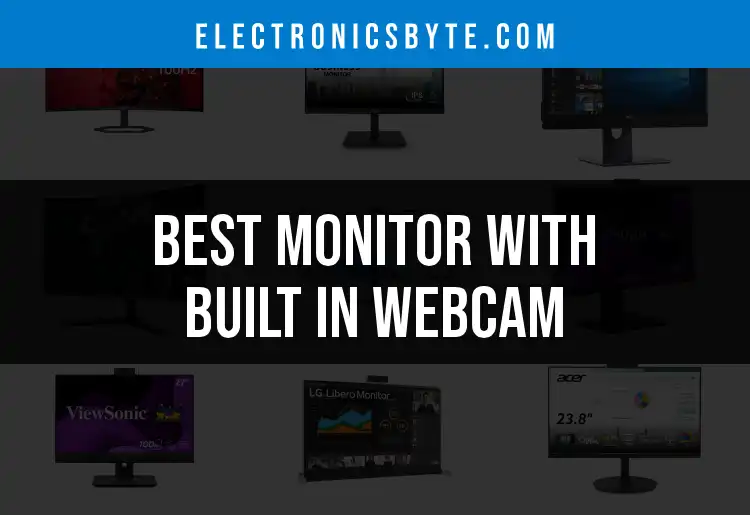Introduction to Monitors and Cables
Monitors and cables form the backbone of any computer setup, functioning as vital mediums between users and their digital environments. A monitor displays visual outputs generated by a computer's graphical processing unit (GPU), while cables serve as conduits that facilitate this connection. Without the right monitor and cables, even the most powerful computer can fall short in delivering an optimal experience.
Choosing the right components is essential not just for performance, but also for usability and comfort. A well-selected monitor and appropriate cables will maximize display quality, compatibility with various devices, and even reduce strain on your eyes during prolonged use. This guide offers in-depth insights into understanding monitors and cables, helping you to elevate your computing experience significantly.
Types of Monitors
LCD Monitors
LCD (Liquid Crystal Display) monitors are a staple in both homes and workplaces, known for their slim profiles and energy efficiency. These monitors utilize liquid crystals sandwiched between two layers of glass or plastic, allowing light to pass through and create images. The popularity of LCDs stems from their ability to produce sharp images and vibrant colors at a relatively low cost.
Understanding the various features of LCD monitors, such as response time and color accuracy, can impact choices significantly, especially for tasks involving graphic design or gaming. Choosing an LCD that fits your specific use case can enhance productivity and visual enjoyment.
LED Monitors
LED (Light Emitting Diodes) monitors improve upon traditional LCD technology by using LEDs for backlighting. This enhances contrast ratios and color accuracy, resulting in a better viewing experience. LED monitors also consume less power, making them an environmentally friendly option.
The increased efficiency and brightness of LED monitors make them ideal for bright environments. For situations where glare can be an issue, investing in high-quality LED monitors would make a noticeable difference—providing clearer images and thus improving your productivity.
OLED Monitors
OLED (Organic Light Emitting Diode) monitors are revered for their superior picture quality, offering over a billion colors and impeccable black levels. Each pixel emits its light, allowing for unparalleled control over image brightness and contrast. This makes OLED monitors particularly beneficial for graphic designers, photographers, and video editors, who require precise color reproduction.
While more expensive than their LCD and LED counterparts, the investment in an OLED monitor can be justified by the superior quality and aesthetic appeal of the visuals. When making purchasing decisions, consider how crucial color accuracy and image quality are for your tasks.
Gaming Monitors
Gaming monitors are designed for performance, featuring high refresh rates—typically 144Hz or more—and low response times, which can be as little as 1ms. These specifications contribute to a smoother gaming experience, reducing motion blur, and providing an edge in competitive gameplay. Some models also incorporate technologies like NVIDIA G-Sync or AMD FreeSync to eliminate screen tearing.
Investing in a gaming monitor is essential if you avidly play fast-paced games, as it can significantly enhance reaction times and immersion. A good gaming monitor can be a game-changer, ensuring you enjoy every online battle or single-player campaign to the fullest.
4K and 8K Monitors
4K and 8K monitors offer phenomenal resolutions, with 4K (3840 x 2160 pixels) delivering four times the detail of Full HD, and 8K (7680 x 4320 pixels) going even further. These monitors are becoming increasingly popular among content creators and professionals who work with high-resolution media.
The difference in resolution is stark, particularly for video editing and graphic design. A well-chosen 4K or 8K monitor can reveal details that would be missed on lower resolutions, making it an invaluable investment for creatives. However, ensure that your hardware can support these high-resolution displays.
Computer Monitor for Visually Impaired
Monitors designed for the visually impaired can include specialized features such as large text options, high contrast modes, and built-in magnification capabilities. These features provide invaluable assistance, enabling visually impaired users to navigate the digital world with more ease.
Selecting such monitors involves understanding user needs and the specific visual impairment. The right choice can significantly improve accessibility and make computing more enjoyable and less frustrating for users. Be sure to explore some effective options in our guide to monitors for visually impaired users.
Understanding Monitor Cables
Types of Monitor Cables
The cables you choose can make a significant impact on the quality of your display. Understanding the different types of monitor cables available is essential for achieving optimal results in connection quality and compatibility.
HDMI Cables
High-Definition Multimedia Interface (HDMI) cables are the gold standard for modern monitor connections, providing both high-quality video and audio in a single cable. They support various resolutions, including 4K, and come in different standards, such as HDMI 1.4 and HDMI 2.1, the latter accommodating even higher resolutions and refresh rates.
Choosing the right HDMI cable is vital, especially for setups involving 4K monitors. The difference in standards impacts the potential refresh rates and resolutions, making it crucial to align your cable choice with your monitor's specifications for a satisfactory performance.
VGA Cables
VGA (Video Graphics Array) cables are older technology primarily used for analog video connections. While they can still be found in legacy systems or basic setups, VGA cables do not support audio and only transmit lower resolutions compared to modern alternatives.
Understanding your setup’s needs is essential, as using VGA cables in high-definition setups may lead to underwhelming performance. If you're dealing with older displays, knowing how to utilize VGA can help you maintain connections without additional investments in new technology.
DVI Cables
DVI (Digital Visual Interface) cables are another option, offering higher quality than VGA and supporting digital signals. DVI cables come in several types—DVI-D (digital only), DVI-I (analog and digital), and DVI-A (analog only)—each serving different devices and compatibility needs.
The choice of DVI cables can also impact quality, especially when it comes to resolution and refresh rates. For users transitioning from older technology, DVI cables provide a bridge while still allowing for higher-quality output than VGA.
DisplayPort Cables
DisplayPort cables are designed for high-performance displays, supporting higher bandwidth than HDMI. They are particularly popular for gaming and professional graphic setups due to their capability to transmit higher resolutions and refresh rates.
For multi-monitor setups, DisplayPort cables often come with features like daisy chaining, allowing multiple monitors to connect to a single output. If you’re looking for cutting-edge performance or planning a multi-monitor environment, DisplayPort is worth considering.
Cable Specifications and Standards
When discussing cables, understanding their specifications is crucial for ensuring compatibility and performance. Factors like bandwidth ratings and pixel rates determine how much data can be transmitted, directly affecting display quality.
For example, HDMI 2.0 supports 4K resolution at 60Hz, while HDMI 2.1 can handle 8K resolution and adaptive frame rates, making it ideal for future-proofing your setup. Always opt for cables that match or exceed your monitor and device specifications to ensure the best possible performance.
Converters and Adapters
HDMI Converters
Converters and adapters provide flexibility in connecting different devices, which is essential for anyone looking to link varied equipment. The world of converters can seem overwhelming, but the right device can simplify connections across multiple technologies.
AV to HDMI Converter
An AV to HDMI converter allows you to connect older devices—like VHS players or classic gaming consoles—to modern HDMI displays. This device upscales analog signals, ensuring a quality visual representation on new screens. For those wanting to relive classic moments without sacrificing display quality, the right AV to HDMI converter is a must-have accessory.
S-Video to HDMI Converter
Similar to the AV converter, an S-Video to HDMI converter caters specifically to older video formats, allowing devices like cameras or older gaming systems to connect to PS4s and the latest TVs. Upscaling these signals ensures a better viewing experience without losing the original integrity of the source material. Explore the top picks available in our guide to S-Video to HDMI converters.
HDMI to Component Converter
If you're trying to connect HDMI devices to older component-based systems (like some HD TVs), an HDMI to component converter offers a solution. These converters allow for compatibility while maintaining acceptable visual quality. Discover more about the options available in our article on HDMI to component converters.
VGA to HDMI Converter
For those with legacy equipment, a VGA to HDMI converter can reintroduce older devices into a modern setup. This converter takes analog VGA signals and converts them to high-quality HDMI digital signals. Explore the best available options in our guide to VGA to HDMI converters.
HDMI to VGA Adapter
An HDMI to VGA adapter is essential for integrating newer devices with older VGA monitors, especially in educational or professional settings. This adapter enables compatibility between devices with different output technologies, proving invaluable in mixed setups. When choosing an adapter, the quality and specifications can impact performance, so checking our insights on HDMI to VGA adapters can help you select wisely.
Lightning to HDMI Adapter
For Apple users, a Lightning to HDMI adapter is essential for connecting iPhones, iPads, or MacBooks to HDMI displays. This accessory allows for seamless media streaming, presentation sharing, and improved productivity by replicating your device’s screen on a larger monitor. For recommendations tailored to high quality, visit our guide on Lightning to HDMI adapters.
USB to HDMI Adapter for Multiple Monitors
Opting for a USB to HDMI adapter can empower you to expand your workspace across multiple monitors, considerably enhancing efficiency and productivity—especially in multitasking environments. These adapters also support high-def video output, thus making them great for those who need expansive displays. To make the best choice, check out our detailed review of the best options available in the guide on USB to HDMI adapters for multiple monitors.
PS1 to HDMI Converter
Fans of retro gaming often seek ways to connect older consoles to modern displays comfortably. A PS1 to HDMI converter not only brings the charm of retro gaming into the 21st century but also upscales the video resolution for better visuals. Explore the available options and how they can elevate your gaming experience in our guide on PS1 to HDMI converters.
Optical to Coaxial Converter
In audio setups, an optical to coaxial converter bridges the gap between different connection types. It ensures high-quality audio transmission between devices that might otherwise be incompatible. By finding the right device for your needs, you can improve your audio experience significantly. Dive into the options available in our coverage of optical to coaxial converters.
Specialized Cables
Fiber Optic 4K HDMI Cable
When dealing with high resolutions like 4K or even 8K, fiber optic HDMI cables are essential for optimal performance over long distances. These cables utilize light to transmit data, drastically reducing signal loss and letting you enjoy high-definition content without degradation, even across lengthy runs. For expert recommendations, check out our guide on the best fiber optic 4K HDMI cables.
HDMI Extension Cables
Sometimes, the standard HDMI cable is too short for your setup. HDMI extension cables can help bridge this gap, allowing you to create more flexible configurations without sacrificing quality. Look into our article on the best HDMI extension cables to find viable options that ensure a solid connection over longer distances.
Wii Component Cable
As gaming technology evolves, connecting older systems like the Nintendo Wii to modern displays can be tricky. A Wii component cable allows for improved video quality, thus enhancing the gaming experience significantly by delivering high-definition visuals. If you want to relive those classic games with clarity, refer to our guide on the best Wii component cables to find your match.
Printer Cables
Although often overlooked, printer cables are essential for ensuring reliable communication between printers and computers. With various types available, from USB to parallel cables, the right choice is vital to maintain printing performance. Learn about the options and their specific uses in our guide to printer cables.
Protective Solutions for Screens
Computer Screen Protector for Eyes
In today’s world, where we spend hours staring at screens, investing in a computer screen protector for eyes can seriously help reduce eye strain and fatigue. Many of these protectors are designed to filter blue light, a type of high-energy visible light that can disrupt your sleep patterns and cause long-term damage to your eyes. By choosing the right protector, you can make a noticeable difference in your comfort during extended use. Discover some of the best screen protectors in our article on computer screen protectors for eyes.
Anti-Glare TV Screen Protector
An anti-glare TV screen protector can be a game changer, especially in well-lit environments. It reduces reflections and glare while maintaining the high-quality image, ensuring that you can enjoy your favorite shows and movies without interruptions from surrounding lighting conditions. Knowing how to select and install these protectors can dramatically elevate your viewing experience. Learn more in our guide on the best anti-glare TV screen protectors.
Conclusion
Understanding monitors and cables is vital for optimizing your entire computing experience. From enhancing visual quality to ensuring compatibility and protecting your eye health, the right choices can lead to a more productive and enjoyable digital environment. This guide has walked you through the critical aspects of monitors and cables—from AV to HDMI converters to specialized cables for various applications.
With technology continuously evolving, staying informed about the latest trends and innovations will allow you to make crucial decisions—and hopefully lead to a more rewarding computing experience. Feel free to dive into the links throughout this guide for detailed insights and product recommendations tailored to elevate your digital life. Happy viewing!

















